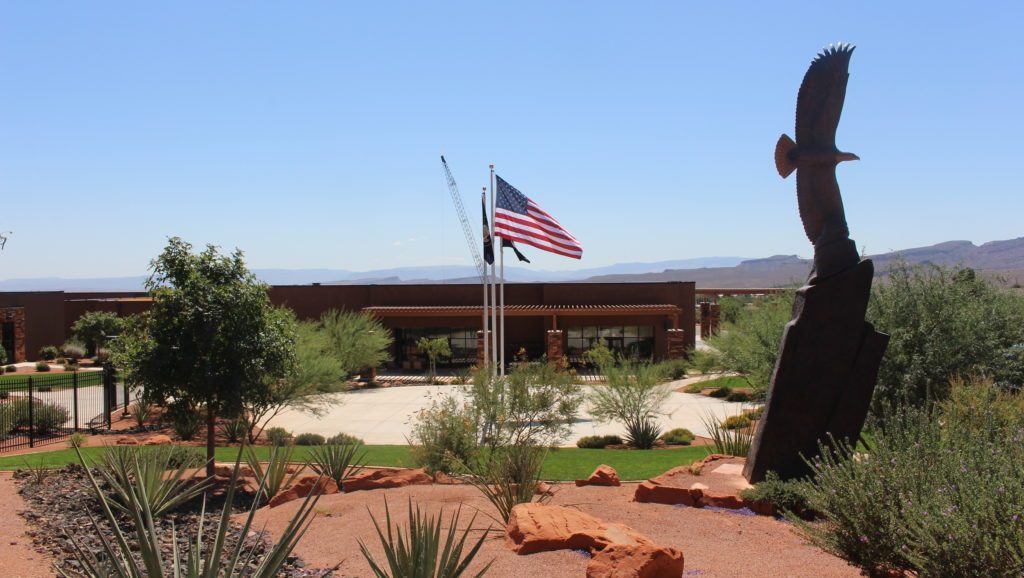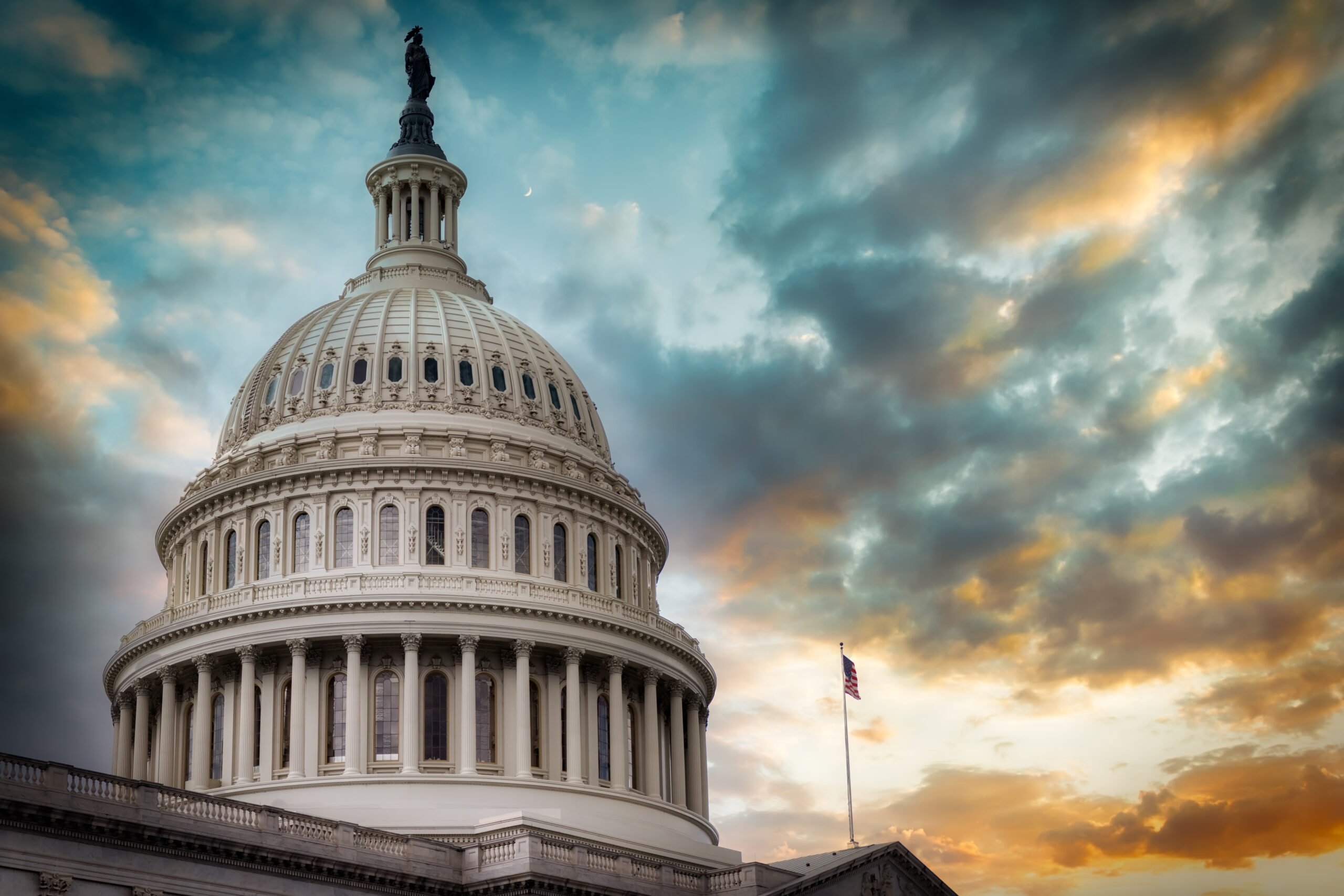
ST. GEORGE — With the clock ticking for a shutdown of the U.S. government to start on Sunday, Southern Utahns are bracing for the effects it will have locally.

Update 1:30 p.m., Sept. 30, 2023: Statement added from Skywest Airlines and possible solution in Congress.
The governor and state government of Utah announced it will provide the funds to keep the local “Mighty 5” national parks open and funds are also in place to continue to provide low-income food assistance through the end of the month.
But other services like air travel, Social Security, Medicaid, government contracting and anything that requires federal aid, oversight or salary will be, at best, delayed or suspended entirely. Even the parks and food aid services funded by Utah may still see reduced services and delays.
However, on Saturday there was a sign the shutdown may be averted after all as Republican Speaker of the House Kevin McCarthy, with the aid of Democrats, put up a 45-day spending measure that passed to keep the government open. That measure goes to the Senate, which may vote on it either late Saturday or Sunday.
On Friday, the House rejected what had seemed like a last attempt to keep the government operating.
Gov. Spencer Cox first indicated a week ago that he and state leaders planned to put in measures to keep at least the national parks like Zion, Bryce Canyon and Arches operating and put that plan into action late Thursday.
“It’s extremely disappointing that Congress is unwilling to fulfill its most basic obligation of funding the government, but Utah is prepared to step up and do what it takes to reduce the impact of a shutdown on Utah families,” Cox said in a statement late Thursday. “In Utah, our number one priority is our families and we will not let down the families who depend on the WIC (Special Supplemental Nutrition Program for Women, Infants, and Children) program. Our tourism economy is also of vital importance and we’ve communicated to Interior Secretary (Deb) Haaland our plan to keep Utah’s national parks open if she is willing to work with us, and our expectation that any state dollars spent will be restored to the people of Utah.”

Haaland, who met with Cox during an April 2021 visit to Utah still has to sign off on taking the funding to keep the Utah national parks open but has not yet indicated if she plans to do so.
Jenny Anzelmo-Sarles, a spokesperson for the Department of the Interior, told St. George News in an e-mail that work on a decision is ongoing.
“We are in touch to discuss possibilities, but I don’t have specifics to provide,” Werner said.
She noted that in the National Park Service’s contingency plan that “subject to the approval of the NPS director, parks may enter into non-reimbursable arrangements” with a state government or third parties to “fund the full operation of an individual park site or of specified services. The plan also says “the NPS is not authorized to reimburse third parties that provide donations for such services.”
Cox noted last week that the federal government still has not repaid the state for funds used to keep parks like Zion open during the last federal government shutdown in 2019, which lasted for a record 35 days.
Utah paid about $7,500 daily during the last part of December 2018 to keep Zion, Bryce Canyon and Arches running. The nonprofit Zion Forever Project committed $16,000 to pay a skeleton crew and keep bathrooms and the visitor center open at Zion, which continued drawing several thousand visitors daily.
The nonprofit National Parks Conservation Association says that every $1 invested in the National Park Service annually supports more than $15 in economic activity. Vicki Varela, managing director of the Utah Office of Tourism, said in a statement that tourists coming from places far to Zion won’t face a closed sign.
“Our first priority is watching out for visitors who have traveled from all over the world to have once-in-a-lifetime experiences. Our national parks will remain open,” Varela said. “We are also mindful of the communities that rely on the visitor economy, and of course, protecting the natural environment of these beautiful places.”

According to the office, the state won’t be running the national parks but funding the continuing operation of basic needs. That includes the visitor center, permitting, trash pickup and bathroom cleanup. Other services may be suspended.
Away from the national parks, Utah State Parks Director Jeff Rasmussen released a statement noting that state parks like Snow Canyon and Sand Hollow won’t be affected by any federal government shutdown.
“Our parks take pride in facilitating visitor experiences,” Rasmussen said. “Our doors are always open.”
Air travel subject to delays
Under federal law, services that protect public safety or national security have to keep running even if the government doesn’t. That includes air traffic control and some Federal Aviation Administration and Transportation Security Administration services.
Even so, many FAA and TSA workers will be furloughed and those who are working won’t be paid during the length of the shutdown. Air travelers are being told to expect delays and other issues.
While St. George Regional Airport doesn’t have an air traffic control tower, there could be other issues from a reduced FAA and TSA staff and there’s also a domino effect from delays at other airports.
But St. George Regional Airport Manager Rich Stehmeier expects clear skies for the local airport.
“I don’t think it will affect us locally,” he told St. George News.
In a statement provided to St. George News, St. George-based Skywest Airlines said it is also keeping watch on possible problems related to air travel.
“We are monitoring any issues related to a potential federal government shutdown and do not anticipate any issues with flights in St. George,” the statement read. “As always, we encourage passengers to monitor their flight status online or using a mobile app, and to arrive at the airport early to ensure adequate time for screening.”
How will federal oversight on Old 91 be affected?
Grinding to a halt during a shutdown will be many programs where the federal government provides oversight and/or funding.

The federal government is partially funding the first phase of the project in Ivins to widen Old Dixie Highway 91. The feds have also been providing some federal oversight. But with the work between 200 East to Kwavasa in its final phases and expected to be completed in the next few weeks, it’s too late for a shutdown to rain on Ivins’ repaving parade according to Ivins Public Works Director Chuck Gillette.
“UDOT (Utah Department of Transportation) is handling the oversight on behalf of (the Federal Highway Administration) so day-to-day, nothing should change,” Gillette told St. George News. “I did reach out to UDOT and see if there might be some issues in getting the contractors paid and they said that since the money is already obligated there will be no impact on payments. So that is good news.”
Those on food aid have a month
Families on the Special Supplemental Nutrition Program for Women, Infants, and Children, known as WIC, will still have aid until at least the end of October. WIC is funded by the federal government but administered by Utah’s Department of Health and Human Services.
The funding for October is already in, meaning the WIC program can continue through at least Halloween.
According to the health department, more than 44,000 Utah moms and children are enrolled in the program. About 37% of families with an infant in the state are eligible.
State officials or Cox have not said whether the state will step in and fund the program if the shutdown extends beyond October.
Other federal services coming to a halt
Many government departments will be shutting down entirely.
Key programs that are considered mandatory spending like Social Security and Medicare will continue to at least maintain payments and most services, but officials with both federal departments say they plan to reduce their number of employees and other services during the shutdown.

But most other federal agencies will close their doors, and many more federal programs will be halted than was the case in 2019. According to the Associated Press, in 2019, the Departments of Defense, Labor, Health and Human Services, Education, Energy and Veterans Affairs already had funding.
But essential services will remain in place, which means Southern Utah Veterans Home in Ivins will continue to operate. However, non-essential activities will likely halt at the Ivins home and local veterans services like career counseling and tuition assistance will stop, according to the department.
Among other services affected by the shutdown:
- Any local resident who works in some capacity for the federal government will either be furloughed or work without pay. A law passed after the 2019 shutdown means they will receive backpay when the shutdown ends.
- Local contractors with federal contractors will see most services with the General Services administration halted or hindered. Work with annual funding won’t likely be affected though others might receive “stop-work” notices. New contracts will be unlikely, according to the GSA.
- Passport services will continue, but a reduction in employees who will be unpaid will increase what Sen. Mitt Romney has already criticized as a backlog of passport applications in the state.
- Those about to make student loan payments for the first time as a pandemic-era freeze ends in October will have a long wait to get questions answered, as the Office of Federal Student Aid said it will reduce its workforce by 83%.
- Federal grants and other funding, as well as other programs, to local school districts and universities will be halted.
- Those who utilized the tax extension to Oct. 16 will see the processing of their filings delayed as well as tax credits and refunds.
Reasons for the shutdown
According to the Associated Press, 21 Republican representatives say that they cannot support appropriations bills that will allow the government to continue operating without cutting more than 30% of funding from most federal programs except for defense and veterans affairs as well as resuming the building of a wall at the southern border and reducing military aid to Ukraine.

A stop-gap measure to provide temporary funding for the government failed, 232-198, in the House Friday with all Democrats – some who say the cuts of 30% to programs in the bill now are already too large – joining the 21 Republicans who are all part of the Freedom Caucus.
Utah’s three Congressional representatives, all Republicans, voted for the bill.
The measure to keep the government open that passed Saturday had all but one Democrat switching to vote yes and 90 Republicans voting no. Utah’s members of Congress all still voted yes as it passed 335-91.
Southern Utah is currently not represented in the House after Rep. Chris Stewart, R, resigned on Sept. 15. Celeste Maloy, a legal aide to Stewart and Cedar City resident, and Utah State Senator Kathleen Riebe, a Salt Lake County resident, are among those running in the general election to replace him on Nov. 21.
Maloy, a Republican, did not respond to a request for comment.
Riebe, a Democrat, told St. George News in a text the shutdown will have “ a dramatic affect on Southern Utah.”
“The impending shutdown is the result of a few extreme politicians playing political games. This posturing has high-stakes consequences: thousands of government workers in CD2, from postal employees to resource managers, will lose their paychecks,” Riebe said. “ Our state government will be forced to prop up national parks that smaller communities rely on as economic drivers.”
Copyright St. George News, SaintGeorgeUtah.com LLC, 2023, all rights reserved.